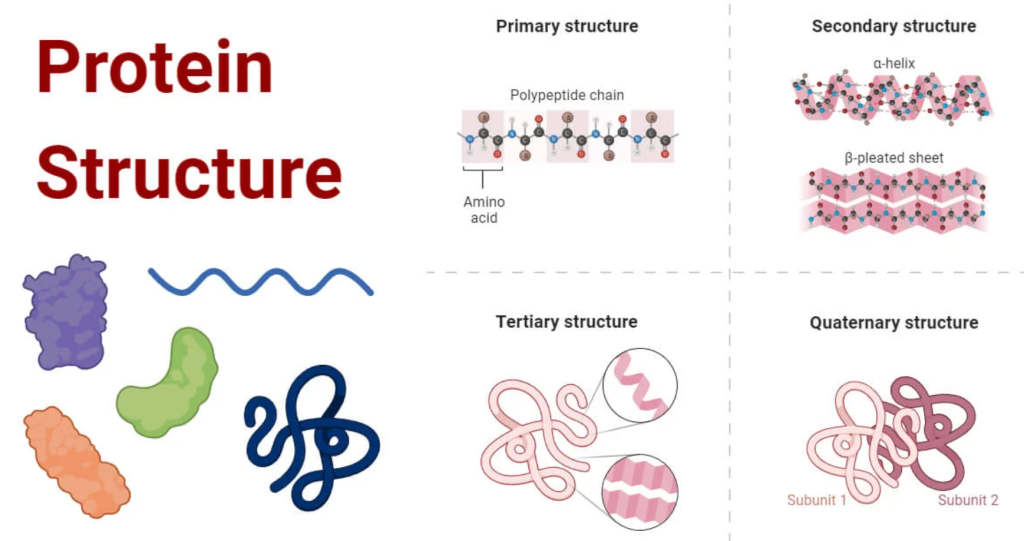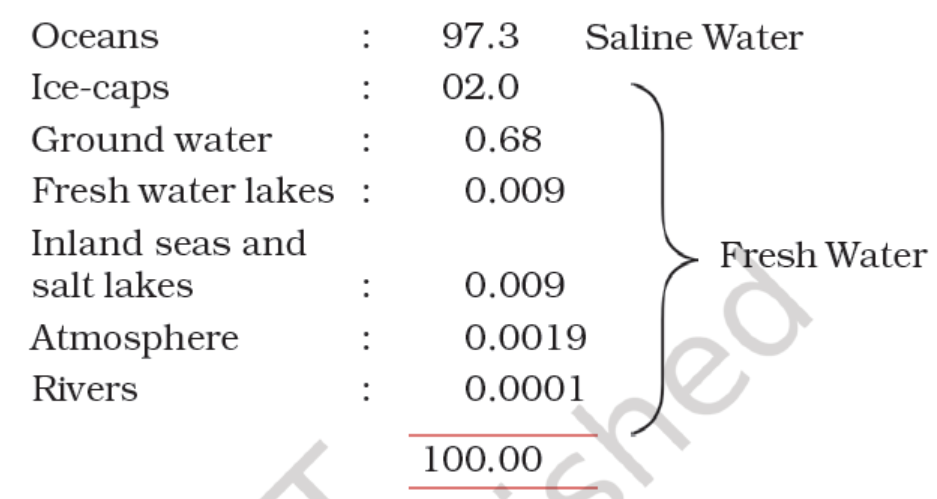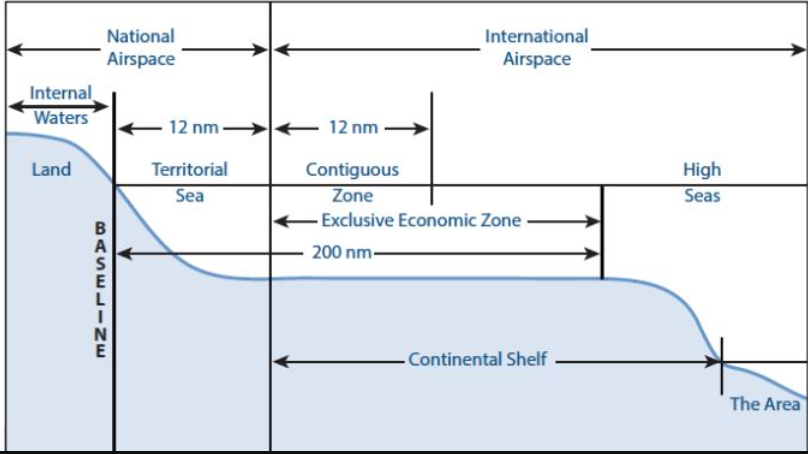CONTENTS
- Use of AlphaFold 3
- Submerged Freshwater Sources
Use of AlphaFold 3
Context:
In 2018, DeepMind, a subsidiary of Google, introduced AlphaFold, an AI tool tailored to predict the diverse shapes proteins can fold into. Two years later, AlphaFold 2 emerged, further advancing this capability. These deep learning systems have revolutionized understanding of protein structures, as demonstrated in competitions like the Critical Assessment of Protein Structure Prediction.
Relevance:
GS3-
- Biotechnology
- Artificial Intelligence
Mains Question:
Can AI be tailored to predict the diverse shapes proteins can fold into? What significance can this discovery hold and what are its associated concerns? (15 Marks, 250 Words).
Mechanism of Working of AlphaFold:
- AlphaFold, an AI-driven tool for predicting protein structures, operates on a Deep Neural Network computer system, mimicking the functionality of the human brain.
- The core processing occurs within the Hidden Networks, situated between input and output layers. Protein sequences are inputted, and three-dimensional structures are outputted.
- The mechanism involves training the model using existing structures from the Protein Data Bank (PDB), then applying this knowledge to predict structures of proteins not in the PDB.
- Subsequent retraining and refinement based on high-accuracy predictions further enhance accuracy.
- AlphaFold has successfully predicted structures for all 214 million unique protein sequences in the Universal Protein Resource (UniProt) database.
- This breakthrough is significant for understanding human diseases, as protein structure informs function.
- Traditional methods like x-ray crystallography or nuclear magnetic resonance spectroscopy are time-consuming and often trial-and-error based.
- AlphaFold streamlines this process, representing a pivotal advancement in science and structural biology.
- Its accessibility has facilitated numerous discoveries in vaccine and drug development, underscoring its transformative impact.
Diverse Shapes of Proteins:
- Proteins consist of lengthy chains of amino acid residues that naturally fold into specific configurations.

- Properly folded proteins carry out their intended functions, but misfolded ones can trigger severe diseases.
- Despite the potential for numerous shapes due to their long chain structure, proteins typically adopt one precise shape while avoiding others.
- This phenomenon, known as the protein-folding problem, remains a significant mystery in structural biology.
- Recently, DeepMind released AlphaFold 3, boasting nearly 80% accuracy in predicting protein shapes and extending its modeling capabilities to DNA, RNA, ligands, and modifications.
- Like its predecessors, AlphaFold 3 accelerates the elucidation of protein structures from years to mere seconds, outpacing traditional microscopic techniques.
- Unsurprisingly, the excitement surrounding the launch of AlphaFold 3 has been accompanied by inflated expectations, echoing the trends seen with its predecessors.
Shortcomings:
- While these machines can accurately predict protein structures, they cannot provide insights into the reasons behind their specific folding patterns; this remains the domain of human scientists.
- Additionally, the potential impact of AlphaFold on drug discovery remains uncertain. Many promising drugs fail to reach the market due to unforeseen interactions between their components and various physiological systems.
- While solving the protein-folding problem is crucial, it won’t inherently enhance the success rates of drugs in human clinical trials; rather, it represents a step in that direction.
- Furthermore, while AlphaFold 3 offers significant advancements in healthcare, its accessibility is limited due to restricted usage terms, and its internal workings are not available for public examination or scrutiny at present.
Conclusion:
While DeepMind’s innovation is commendable, the valuable contribution of AlphaFold 3 to healthcare suggests the need for exploring alternative revenue models that don’t involve restrictive paywalls or exorbitant prices—a fate already witnessed with scientific papers and medications stemming from publicly funded research, bearing in mind that AlphaFold’s training data itself includes protein structures initially elucidated through such research efforts.
Submerged Freshwater Sources
Context:
It’s astonishing to contemplate the vast reserves of freshwater lying beneath the salty oceans. According to a media report, back in the 1960s, the U.S. Geological Survey accidentally tapped into freshwater while drilling boreholes off the coast of New Jersey. Since then, scientists from various countries, including Vietnam, have made similar discoveries of submerged freshwater sources.
Relevance:
- GS1- Geographical Features and their Location-Changes in Critical Geographical Features (Including Water-Bodies and Ice-Caps)
- GS2- Effect of Policies & Politics of Countries on India’s Interests
- GS3-
- Agricultural Resources
- Water Resources
- Conservation of Resources
Mains Question:
Recent discussions and discoveries of submerged freshwater sources indicate the lack of a coherent framework of governance in this regard. Analyse. (10 Marks, 150 Words).
Relevant Findings:
- A river flowing beneath the Black Sea was found to be more than 100 feet deep with a flow rate of about four miles per hour, equivalent to approximately 22,000 cubic meters of water passing through its channel.
- In terms of scale, this underwater river rivals some of the largest land-based rivers, as reported by the media.
- These findings provide concrete evidence of the existence of rivers beneath the sea.
Significance of the Findings:
- Global water statistics indicate that out of the estimated 1.386 billion cubic kilometers of water on Earth, 97.5% is saltwater and only 2.5% is freshwater.
- Moreover, a mere 0.3% of this freshwater exists in liquid form on the Earth’s surface, suggesting that the majority is located underground, including beneath or within the ocean bed.

- Given the dwindling availability of freshwater, nations are increasingly inclined to explore and exploit these underwater resources within their maritime zones.
Extending the Exploration:
- Eventually, this exploration may extend beyond Exclusive Economic Zones (EEZs) into the “Area” defined under the United Nations Law of the Sea Convention, 1982 (UNCLOS).
- The “Area” encompasses the seabed, ocean floor, and subsoil beyond national jurisdiction, constituting the common heritage of mankind.

- This designation implies that these resources are accessible for the benefit of all, with a responsibility to safeguard them for future generations.
United Nations Convention on the Law of the Sea’s Framework:
- The Law of the Sea, primarily encapsulated in the United Nations Convention on the Law of the Sea (UNCLOS), serves as a fundamental framework for governing oceanic affairs internationally. However, customary international law remains a significant influence in this domain.
- While UNCLOS is renowned for its comprehensive coverage of ocean governance, it’s worth noting that several prior conventions, including the Convention on the Territorial Sea and the Contiguous Zone, the Convention on the High Seas, the Convention on Fishing and Conservation of the Living Resources of the High Seas, and the Convention on the Continental Shelf (Geneva Conventions on the Law of the Sea, 1958), address many similar issues and are largely based on customary international law.
- Adding complexity, Article 311 of UNCLOS stipulates its superiority over the Geneva Conventions on the Law of the Sea, 1958, among states that are parties to UNCLOS.
- Consequently, non-signatory states are not bound by UNCLOS and may not recognize concepts such as the Exclusive Economic Zone (EEZ) or the “Area” beyond 200 nautical miles.Interestingly, the United States is a signatory to the Geneva Conventions of 1958 but has not ratified UNCLOS.
- Exploration and exploitation of resources within the “Area” under UNCLOS are constrained to the term “resources,” which encompasses solid, liquid, or gaseous mineral resources in situ, including polymetallic nodules. However, it remains unclear whether this definition encompasses freshwater.
- The International Seabed Authority (referred to as the Authority) is mandated under UNCLOS to regulate activities in the “Area.” Thus, exploration and extraction of minerals must adhere to the rules established by the Authority.
- However, it raises questions about the oversight of states party to the Geneva Conventions, particularly in mining and exploration activities within the “Area,” as they are not directly regulated by the Authority.
Way Forward:
- The next frontier for exploration is anticipated to revolve around water and territorial expansion, as indicated by current global trends.
- With freshwater projected to become increasingly scarce and costly in the future, areas beyond national jurisdiction, such as the “Area” defined under the Law of the Sea, hold potential for freshwater exploration and extraction.
- Similar to the process of exploring and capping oil wells for future utilization, identifying and safeguarding fresh water wells could become essential for future needs.
- However, the absence of specific legislation and terminology governing the exploration and management of resources beyond national borders, particularly freshwater, within the framework of existing maritime laws, is likely to stir controversy surrounding the “Area” once again.
- India, with its growing prominence on the global stage, has the opportunity to assume a leadership role in this endeavor.
- Prioritizing this issue would contribute significantly to the betterment of humanity, compared to investing vast resources in searching for water on distant celestial bodies like Mars and the Moon.
Conclusion:
Given the concerted efforts of the international community towards achieving Sustainable Development Goals and addressing activities in areas beyond national jurisdiction, it becomes imperative to formulate comprehensive and non-controversial legislative measures to address these gaps, especially concerning freshwater exploration from the “Area.”



